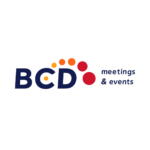Historically, the primary goals of Meetings Management were to contain costs and drive savings, mitigate risk, ensure compliance to industry regulations and produce quality events. That’s right! Event quality was part of the initial conversation. However, because the buyer typically bought with a procurement lens and was most concerned with savings and compliance, event quality did not often receive the attention it deserved.
Why event design matters in meetings management
With new customer types emerging and a focus on stakeholder engagement within Meetings Management, event quality is back on the table—taking on central importance as a goal for many programs. These days, in order to have a successful program, organizations must pay attention to the quality of their events in order to drive high attendee engagement and satisfaction. They must also be able to measure that satisfaction and demonstrate the event-specific return on investment (ROI). Savings and compliance are now table stakes, and if individual events do not meet the needs of an organization’s meeting stakeholders, the enterprise-level Meetings Management program will not succeed.
Event design factors that affect your meeting:
There is an excellent toolkit of design elements that integrate innovative components to make the biggest impression and create unique experiences for attendees. We want them to look forward to attending, enjoy themselves during the event, become motivated while there and rave about it after they leave. A few design aspects to consider are the location of the event, the flow and format of the event, catering, room set-up, entertainment and how the event organizers interact with the attendees throughout the life of the event. Here, we dive into three event design factors that can affect the success of your meeting.
The meeting space
Regarding locations, more and more hoteliers are now offering interesting spaces within their venues and coupling them with a variety of room set-ups that are more conducive to your event goals. Meeting spaces are no longer limited to your standard hotel conference room or ball room. Meet in the hotel kitchen and cook a meal together, or breakout in an outdoor space to brainstorm among the group. Work with the catering department to provide unique meals and snacks, arrange for décor and seating that’s conducive to your event type.
Consider mixing up your session types by providing targeted and truly interactive attendee content. Transform your breakouts into interactive sessions and vary the format from one to the next by changing their length, moving from classroom-style to smaller groups to facilitate having informal and more targeted discussions.
Also, consider unusual venues for your events, such as restaurants and other unique hospitality event spaces like yachts, museums, tree houses, sports stadiums, warehouses, ice bars, arboretums, castles and so on.
The connection & communications
How event organizers communicate and interact with their attendees is also becoming an important design element for events, as today’s attendees expect to be recognized and interacted with on a personalized basis.
For events where the primary goal is to move customers along their sales life-cycle or to deepen their brand loyalty, attendees expect organizers to know them well. Social media contact with participants and digital event tools are important contributors to this effort. Using the full suite of available platforms in the online space is a good way to build excitement and a sense of community prior to an event. During the event, social media tools can be used to increase and measure engagement, and post-event they can be used to continue the sense of community and sustain connections with customers.
The attendee engagement
Attendee engagement and tracking tools are another way to enhance the customer experience while simultaneously facilitating measurements. These tools include event apps, second screen applications, beacons and smart badges which provide technical and behavioral data such as marketing effectiveness, event cadence, attendee interest and audience participation. Measuring attendee engagement with digital tools not only provides important data for ROI reporting but also provides up-to-the-minute insight into an attendee’s level of satisfaction and engagement with the event.
Read 7 Meetings & Events Technology Trends to Try Now
This real-time attendee engagement and satisfaction data informs the event organizers of needed changes and enables them to make changes to their event design as it progresses. Creating a sense of community, engaging attendees throughout the event life-cycle and using engagement tools to enhance the attendee experience all benefit the attendees and also the event stakeholders, who get insight into effective content and engagement during speakers and sessions, event goals success and critical ROI data. These factors will give the meeting stakeholder every reason to remain within the enterprise Meetings Management program.
While the broader objectives of your meetings program are tied to the company’s overall goals and are typically driven by cost containment, risk mitigation and compliance, we cannot discount the customers to this service. The event attendee is looking for a community to connect with and engaging content that will inform their buying decision, engagement level, etc. The meetings stakeholders are looking for engaged and motivated attendees who will, at a minimum, continue to engage and remain loyal to the brand or commit to your organization. Event Design is a critical element in accomplishing the stakeholder and overall company goals, as well as ensuring stakeholders buy in, feedback and commitment to your organization’s Meetings Management program.
Originally published Aug 31, 2017 5:24:56 PM
Last updated on Jan 5, 2023 10:42:54 AM

